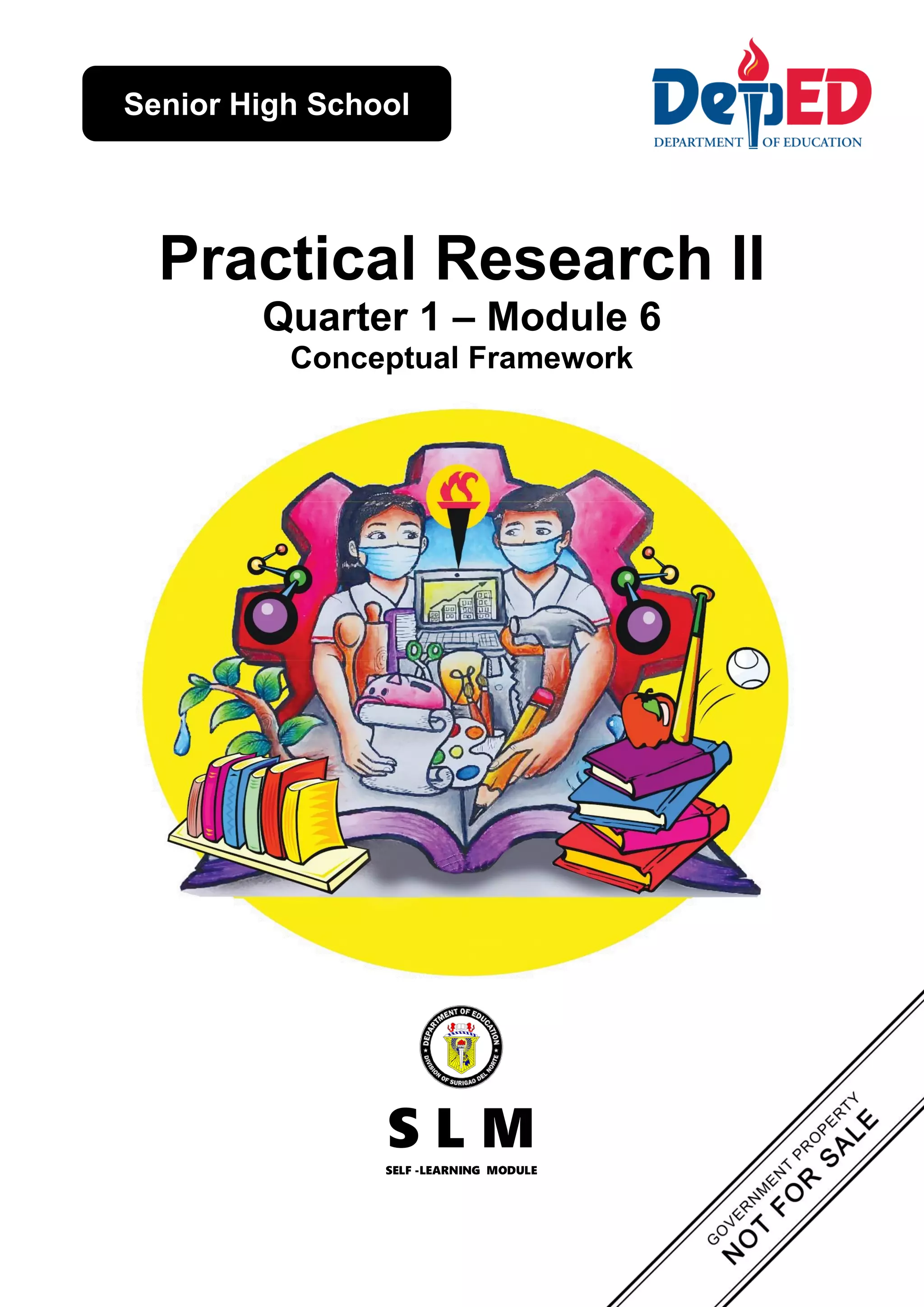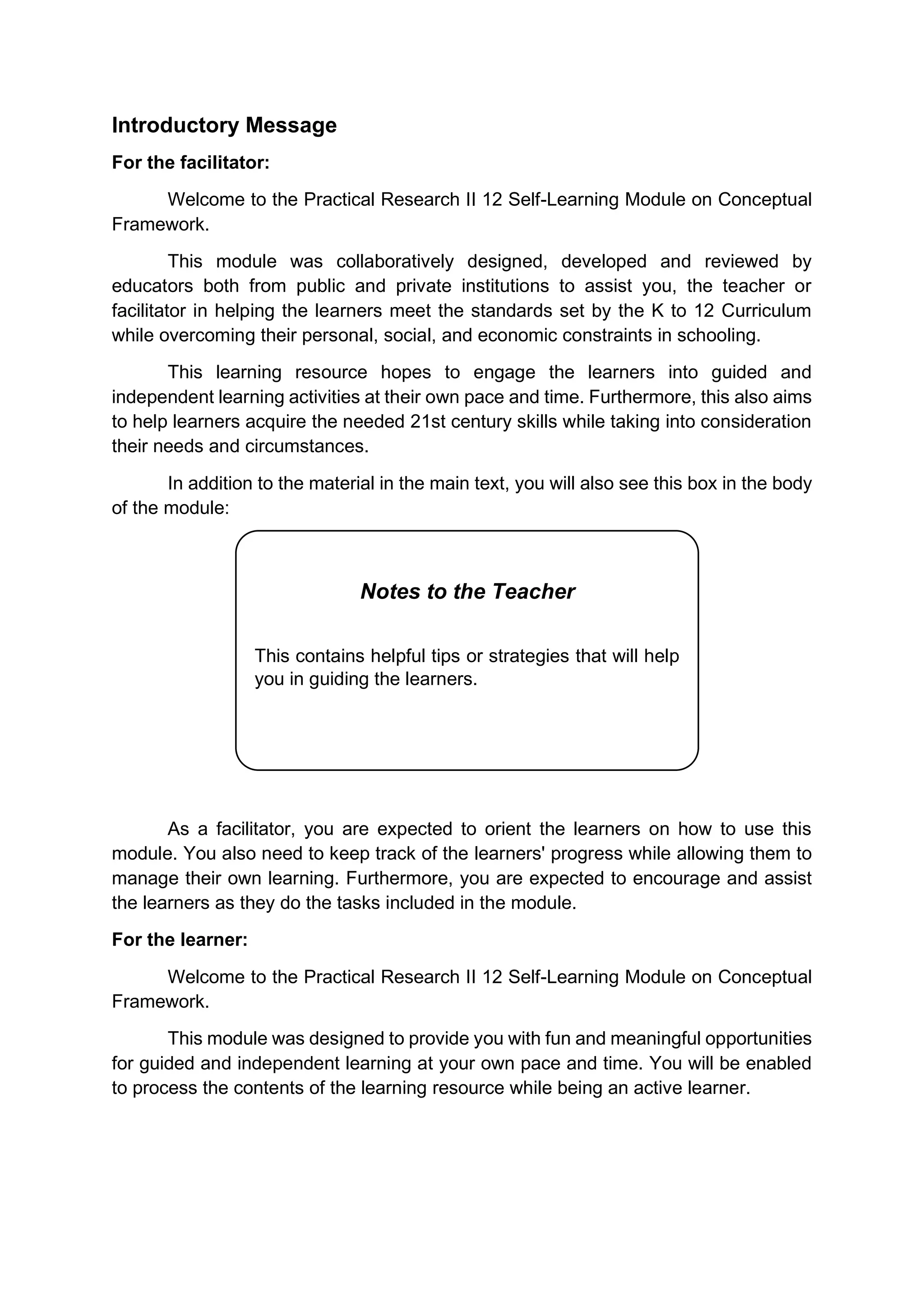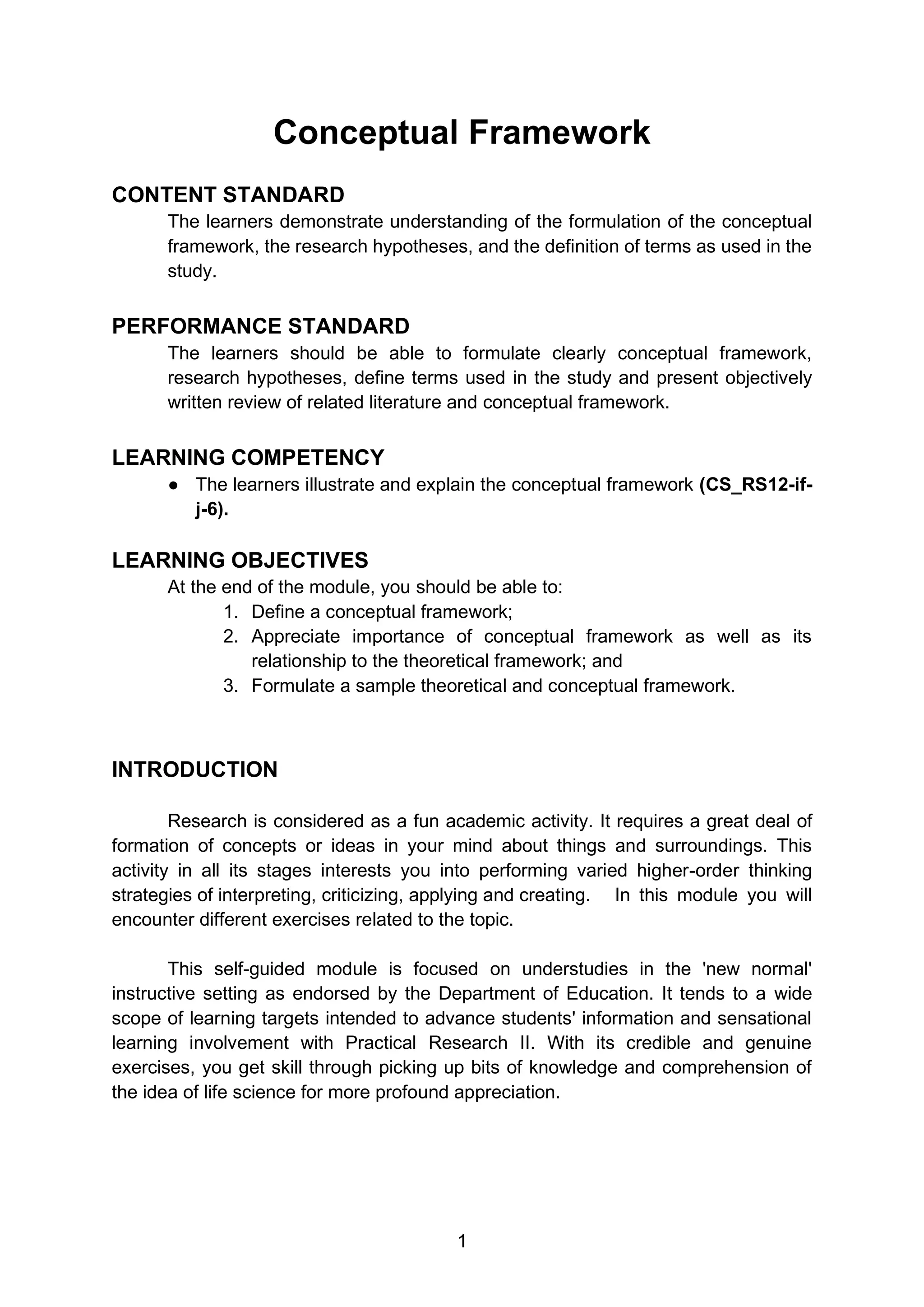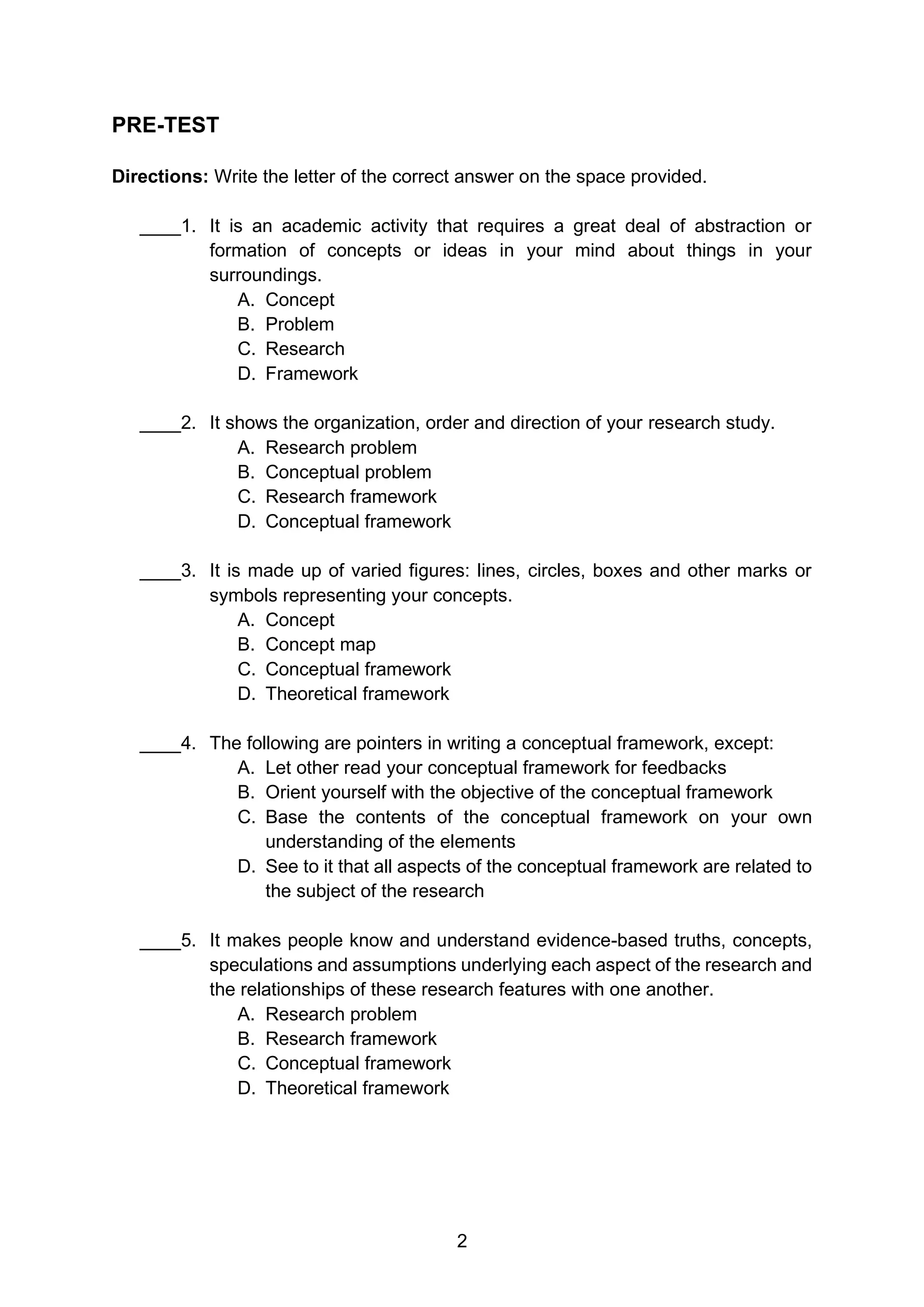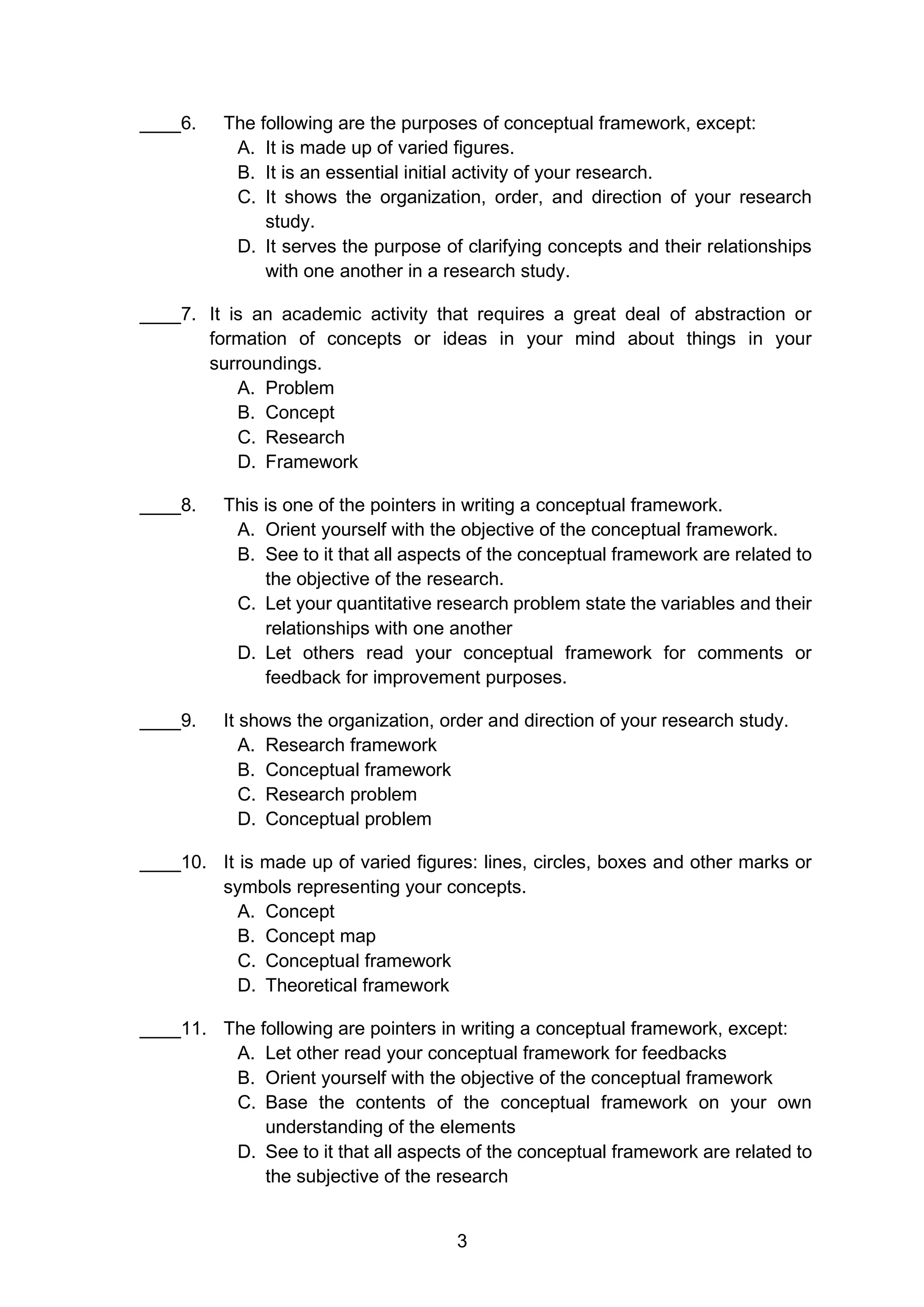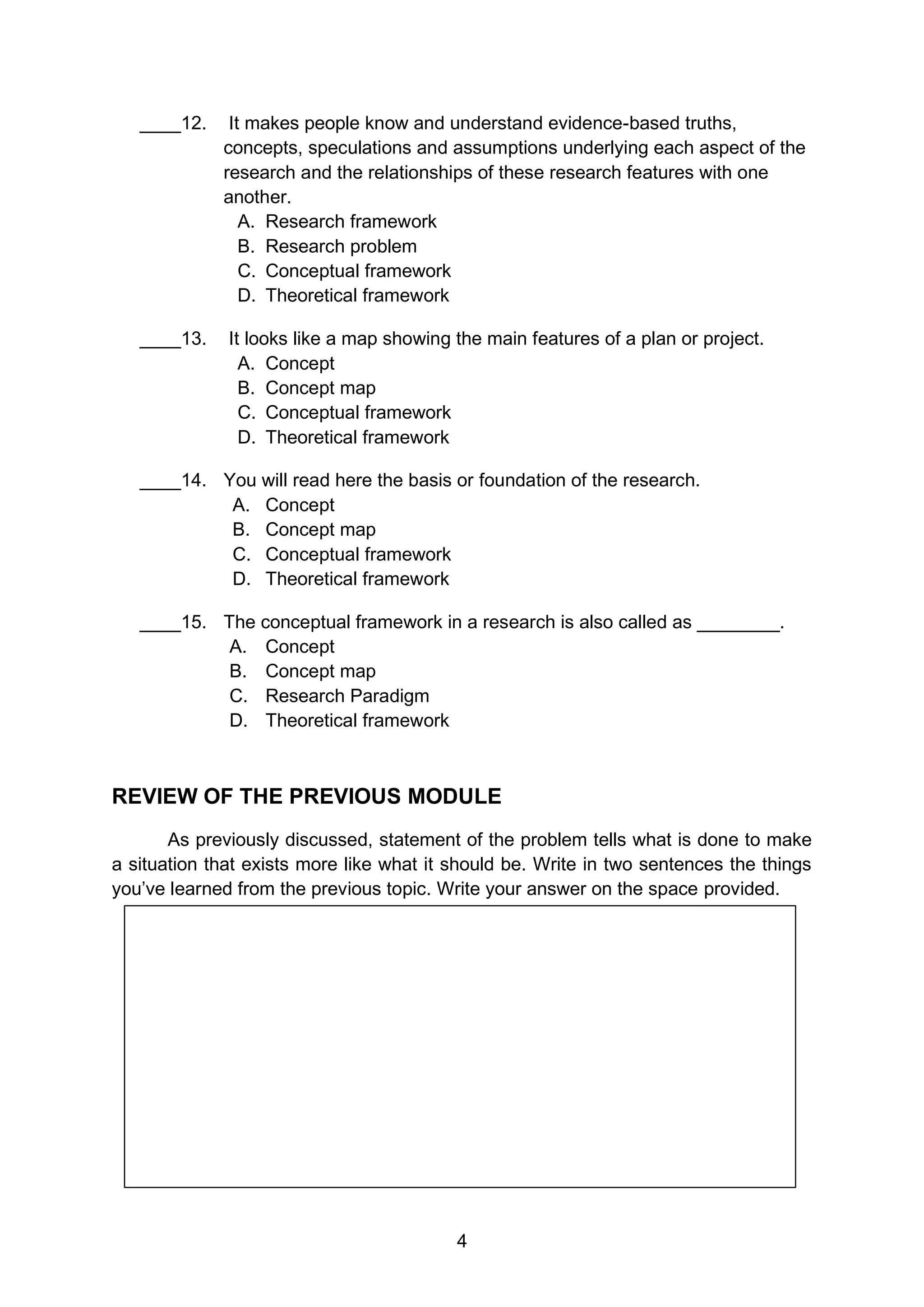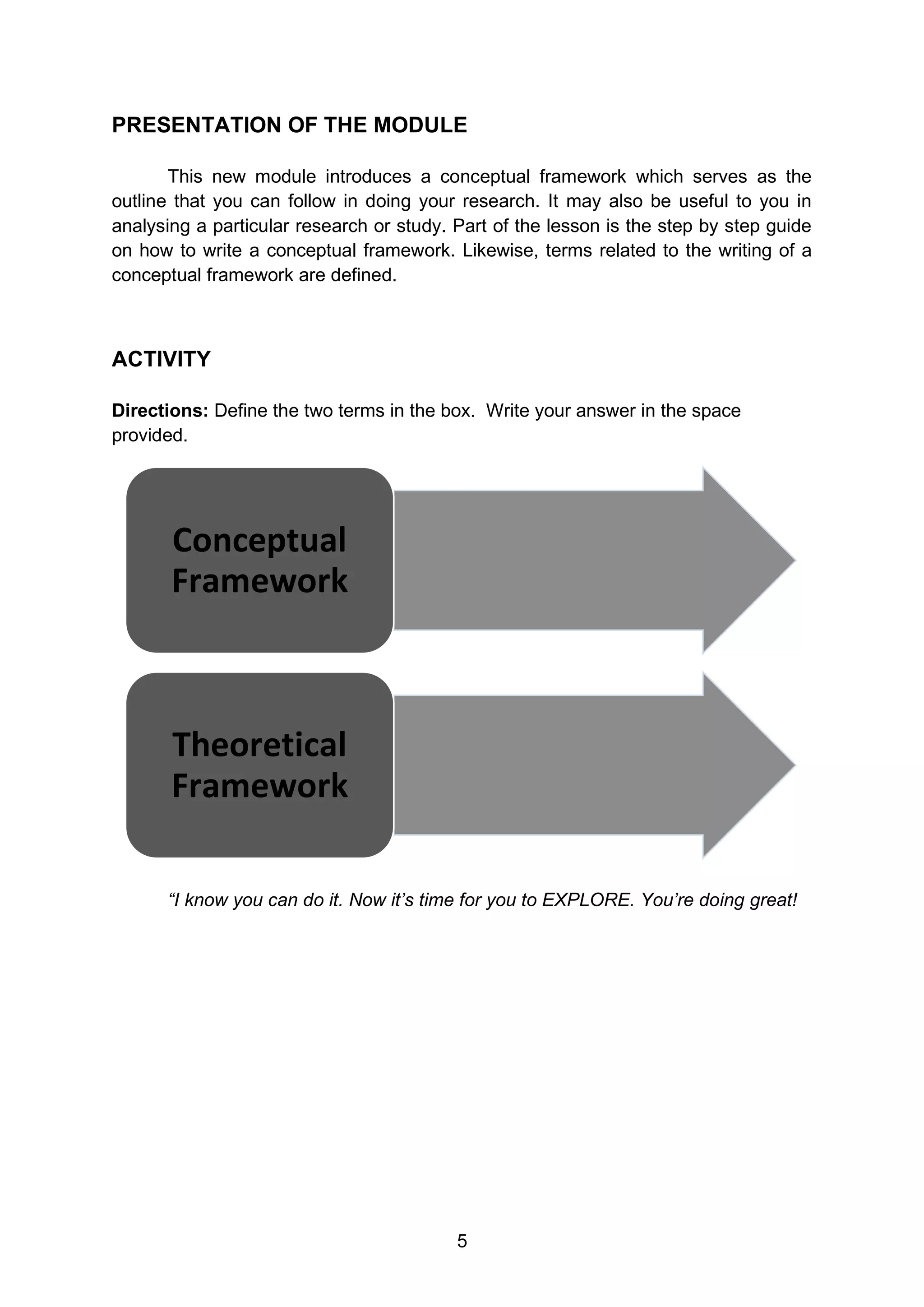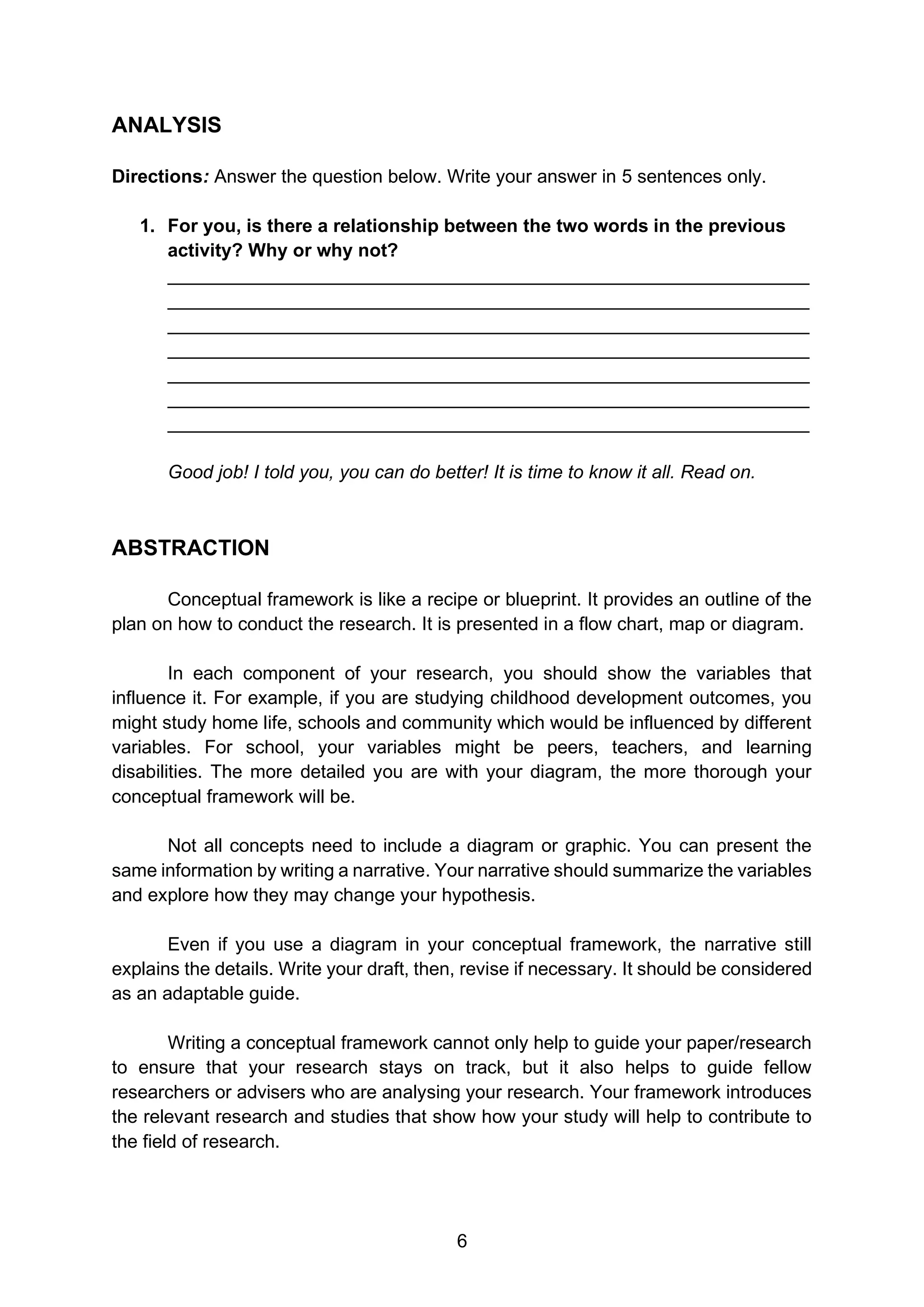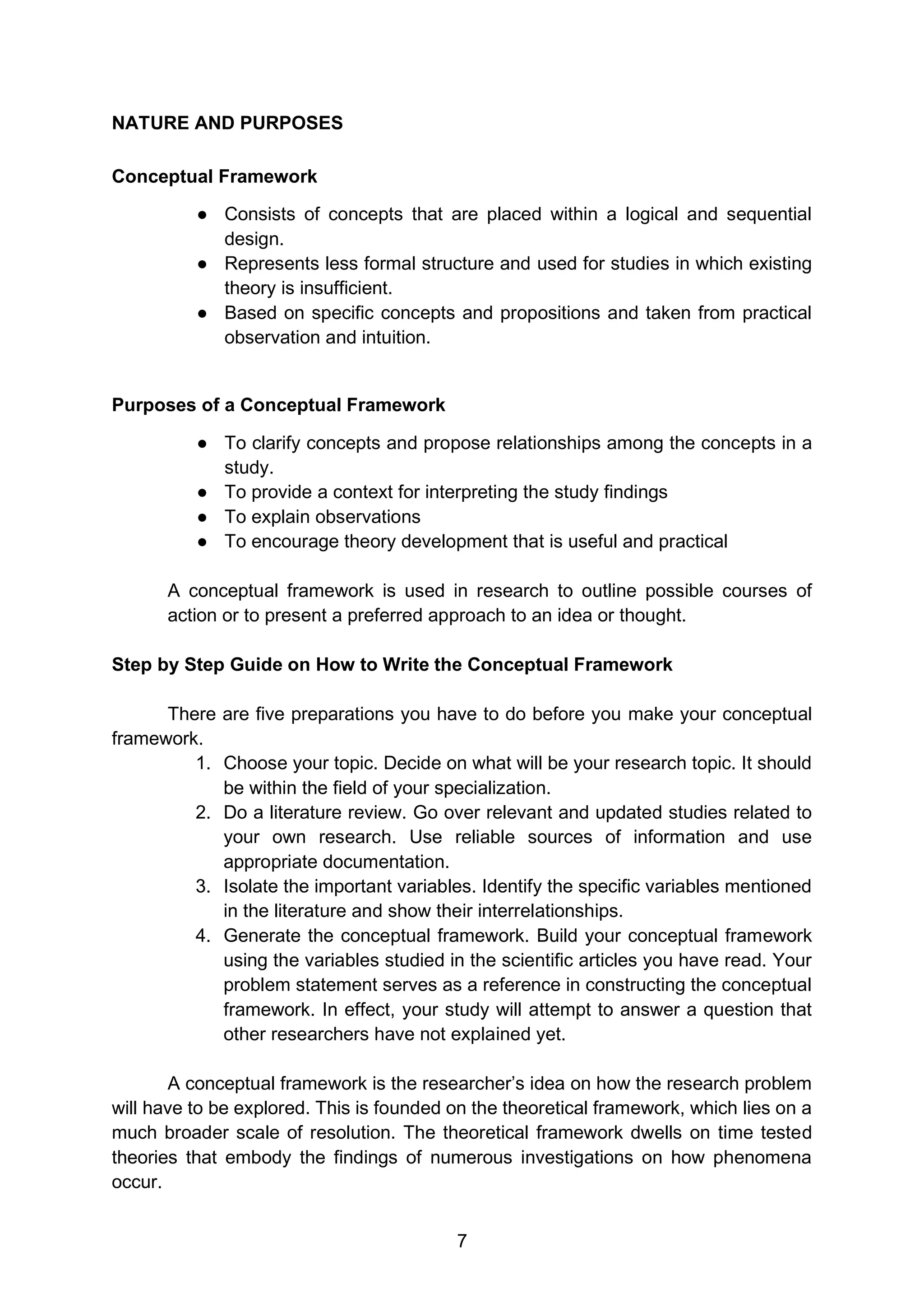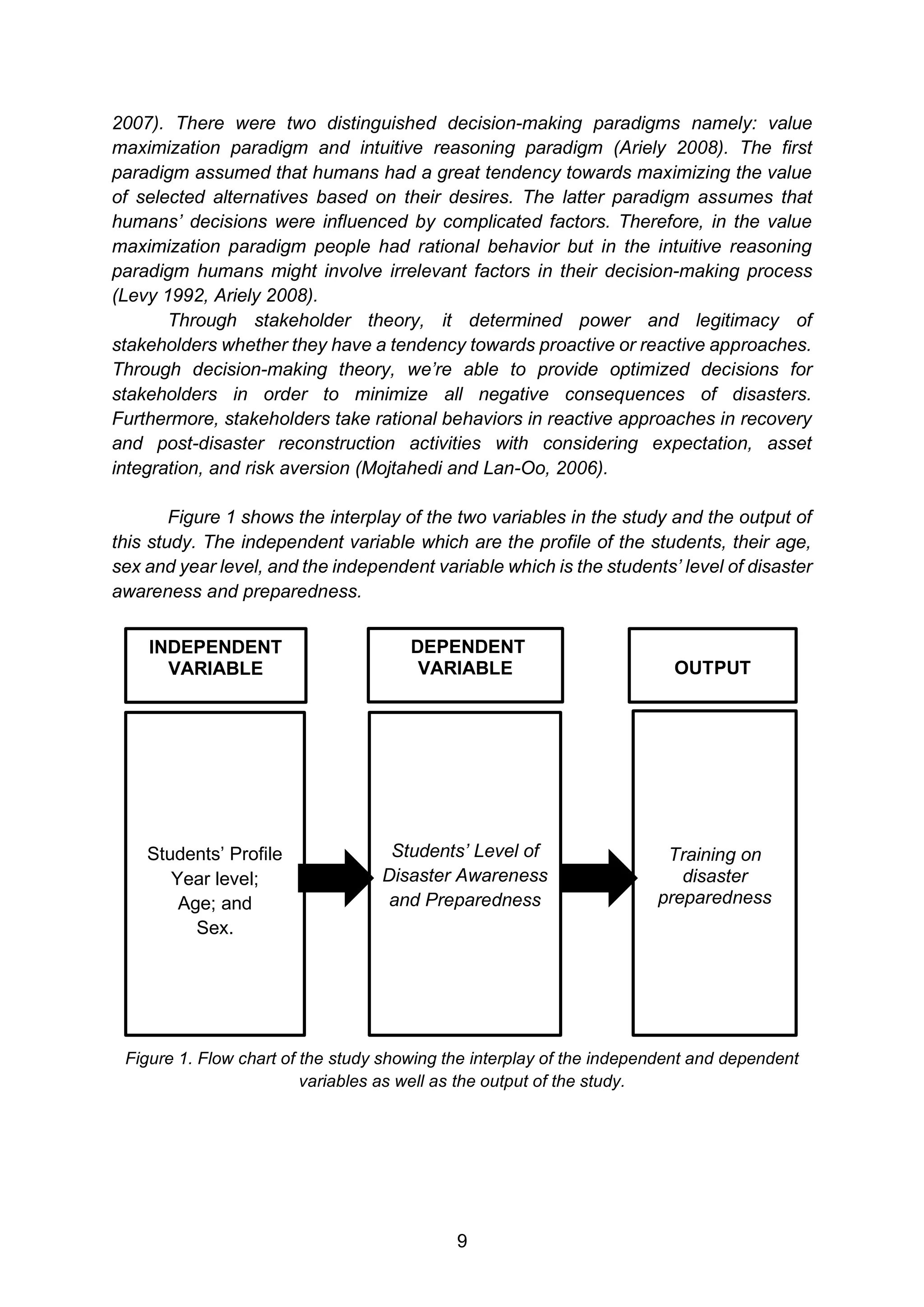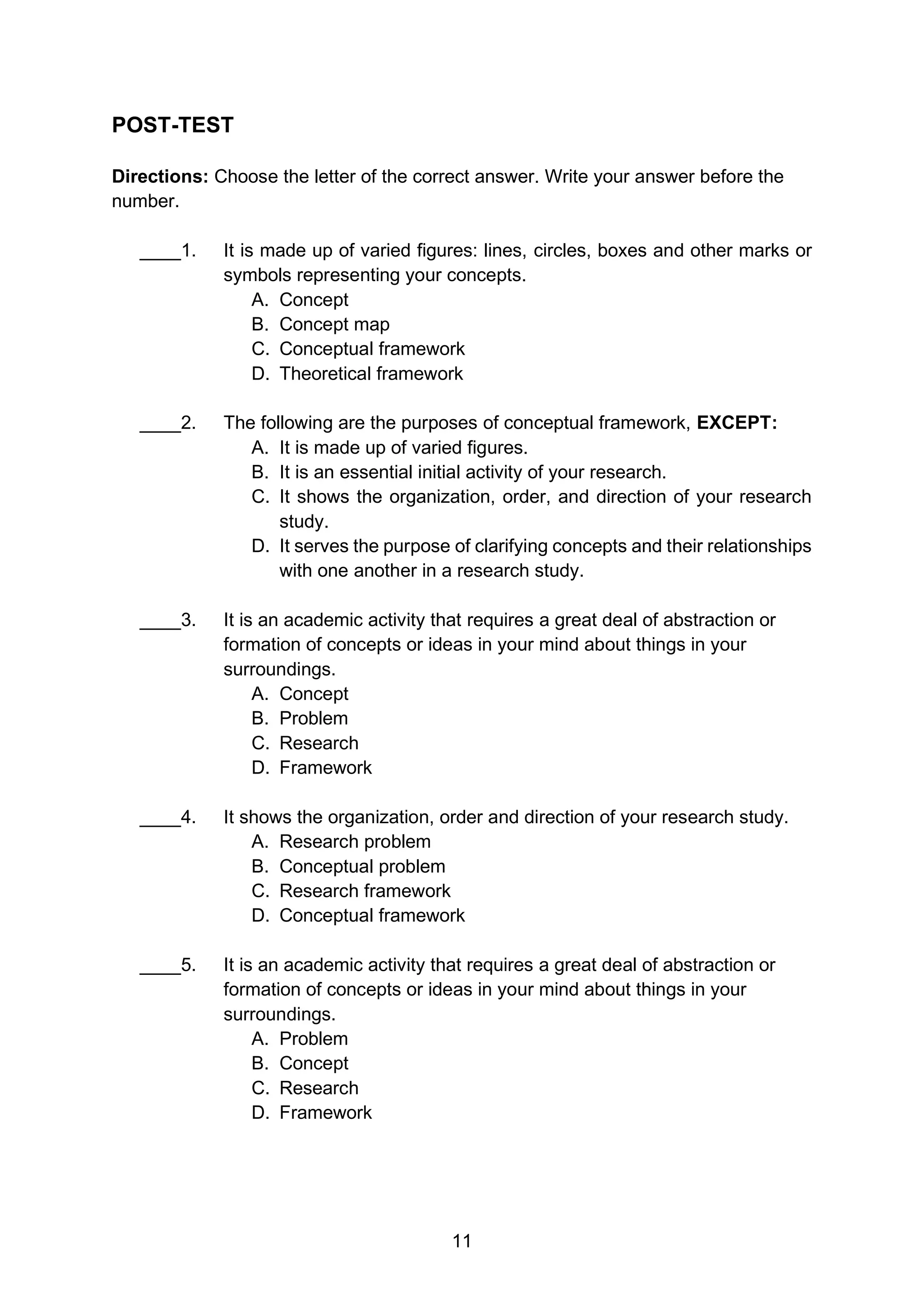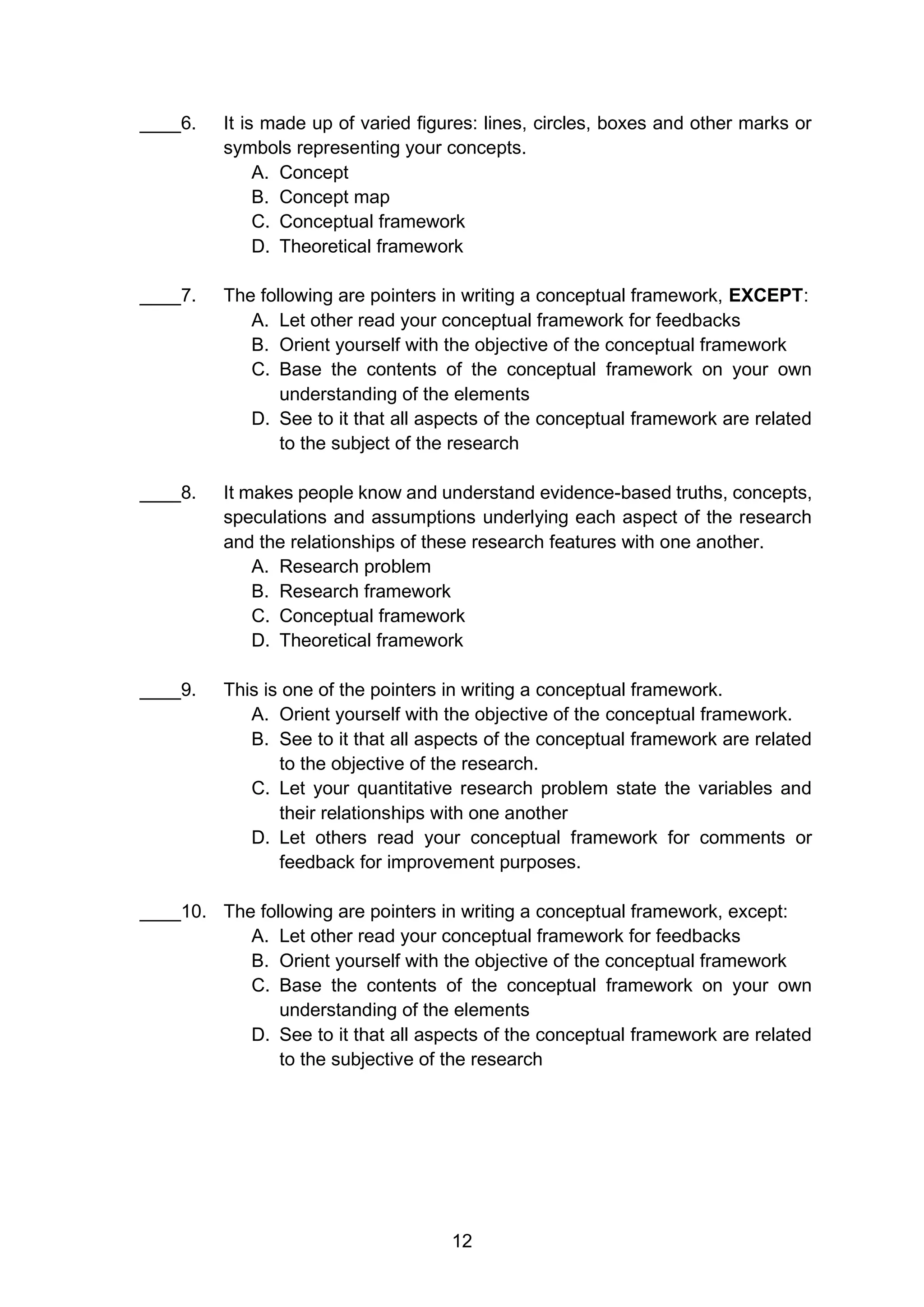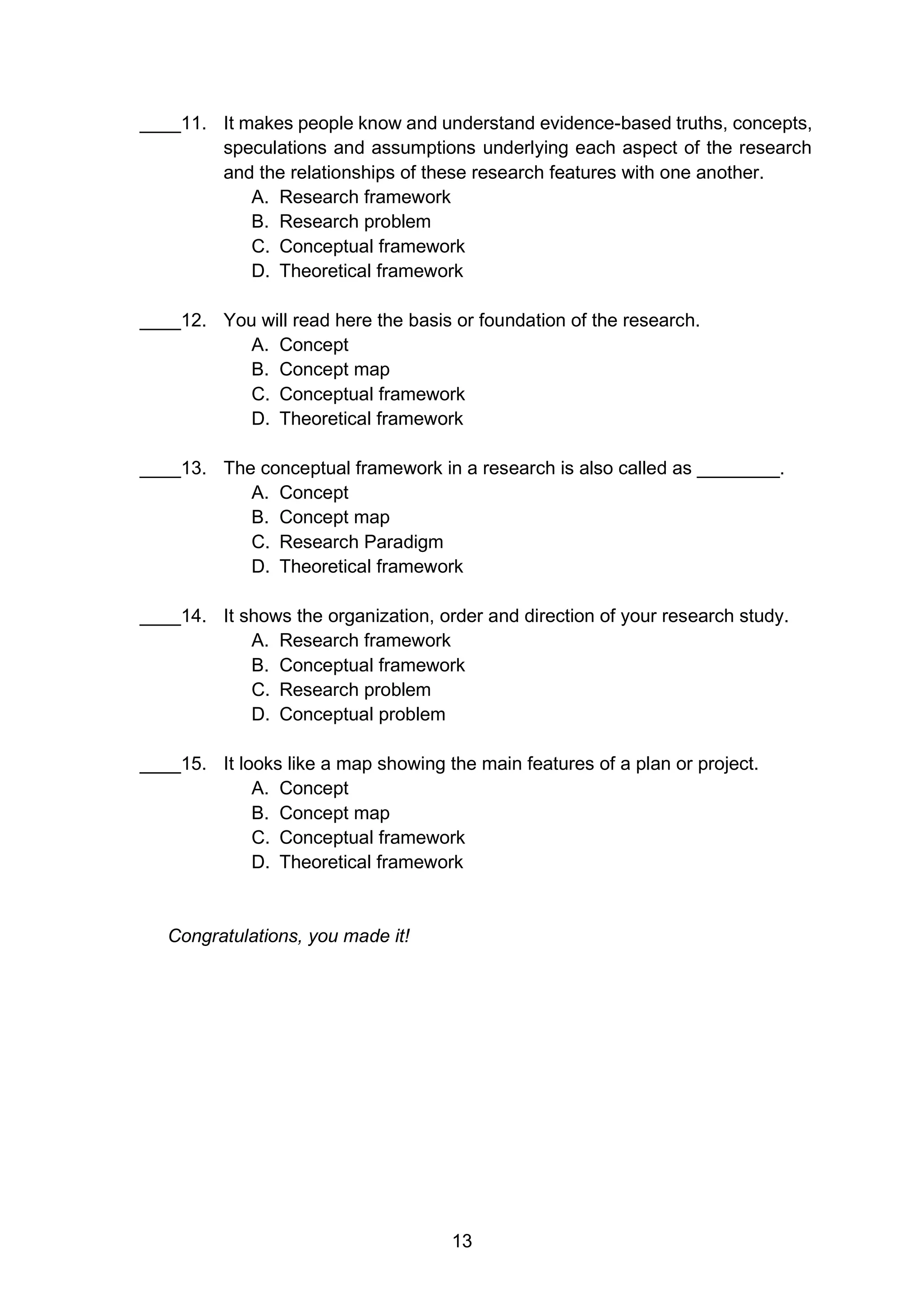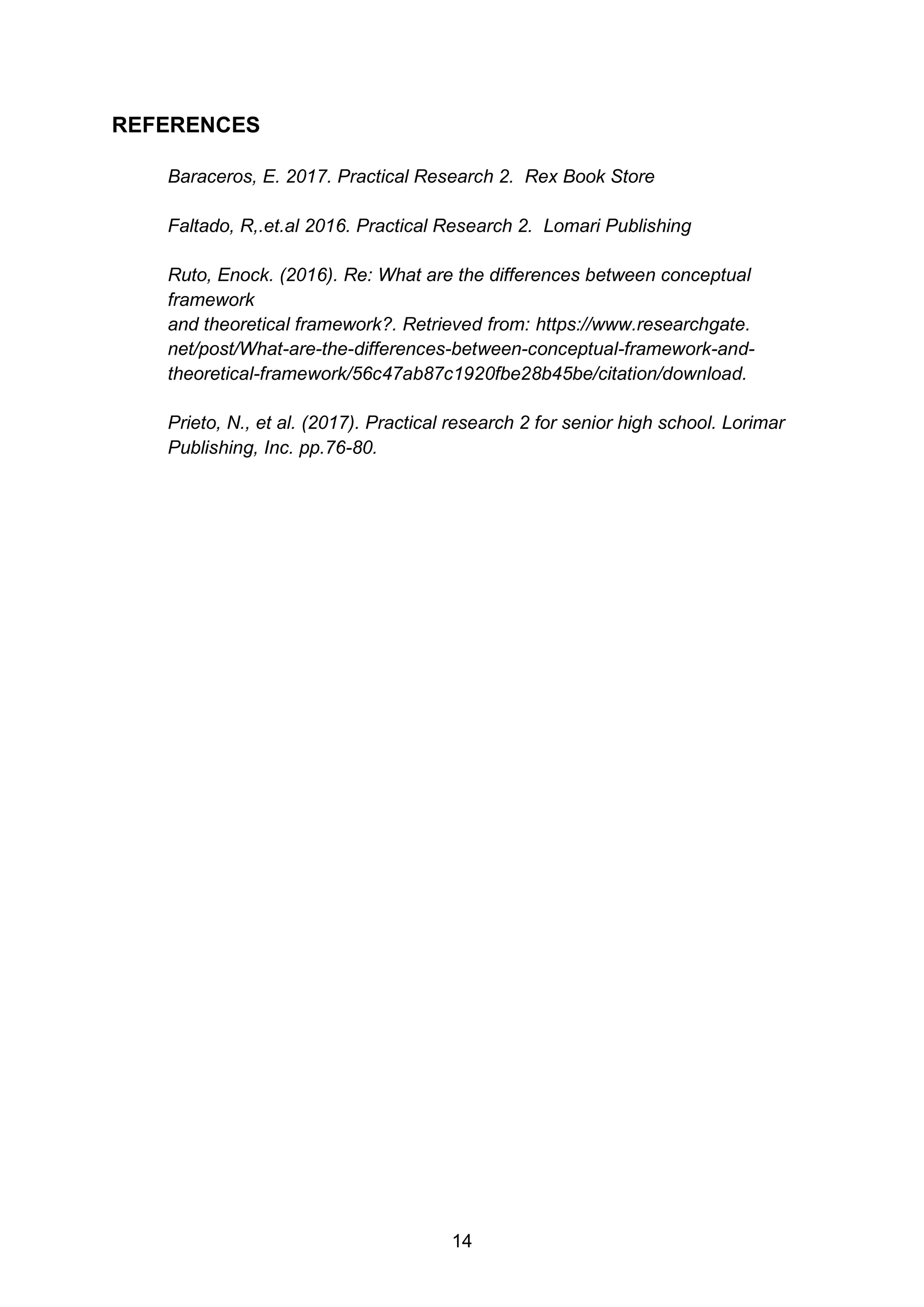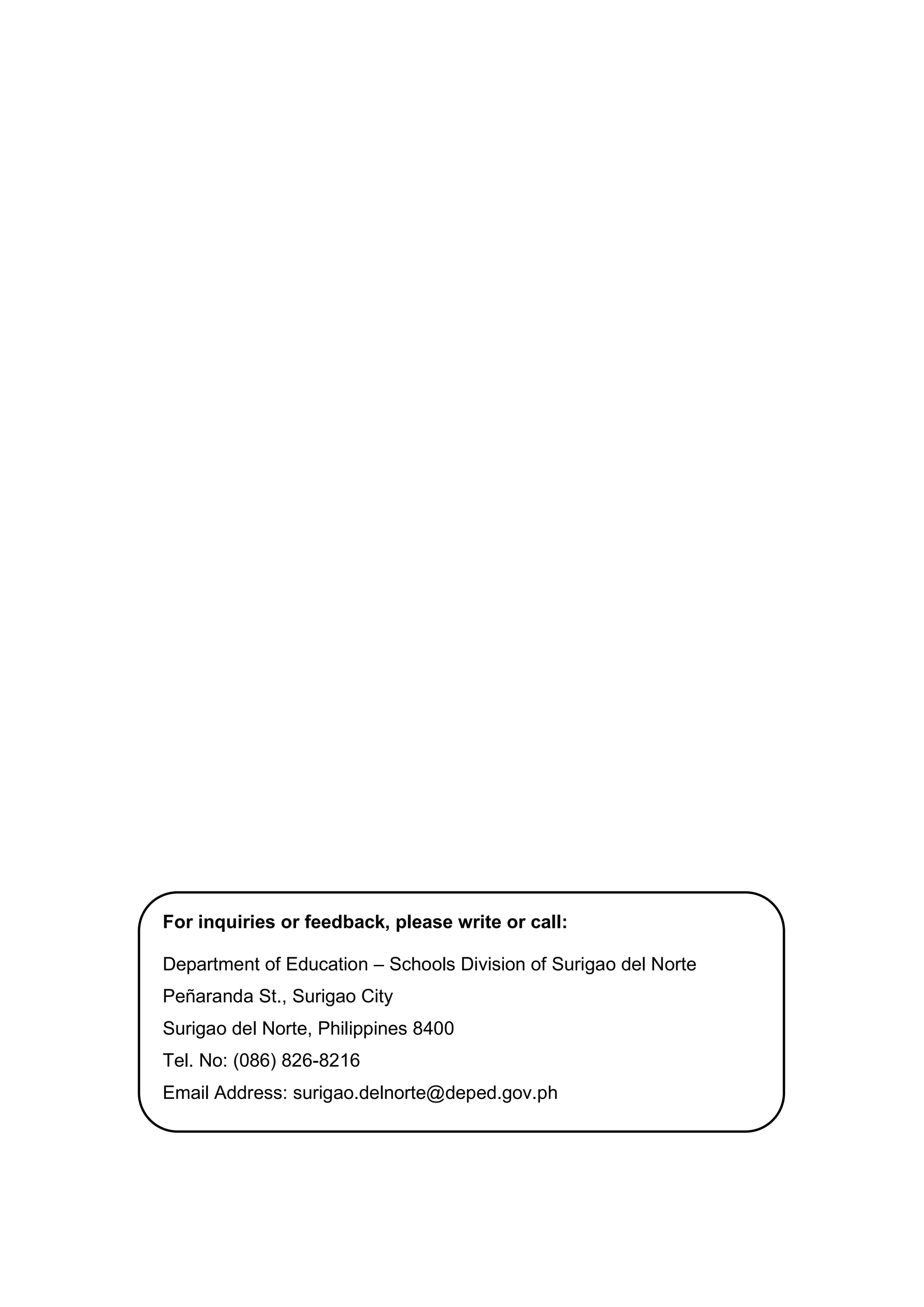Here is a sample theoretical and conceptual framework based on the research title, scope and delimitation, and problem statement from the previous modules:
Research Title:
Factors Affecting the Academic Performance of Grade 10 Students in English Subject
Theoretical Framework
This study is anchored on Bloom's Taxonomy of Educational Objectives, Maslow's Hierarchy of Needs Theory, and Vygotsky's Socio-Cultural Theory of Cognitive Development.
Bloom's Taxonomy classifies learning objectives into different domains including the cognitive, affective, and psychomotor domains. It proposes that there are different levels within the cognitive domain from the basic recall or remembering, to the more complex levels of analyzing, evaluating, and
